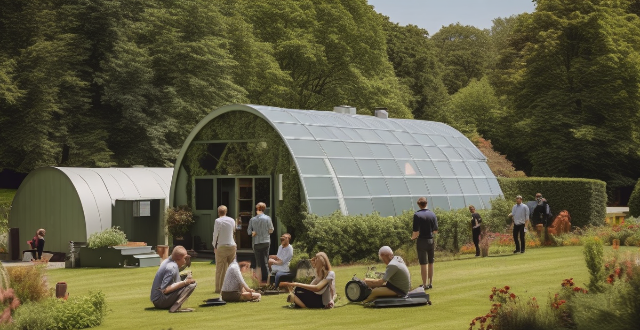Strategies to prevent more people from becoming climate refugees include reducing greenhouse gas emissions, implementing adaptation measures, promoting international cooperation, raising awareness and education, and fostering sustainable development. By taking these actions, we can work towards a future where fewer people are forced to become climate refugees due to the devastating effects of climate change.

How Can We Prevent More People from Becoming Climate Refugees?
Climate refugees are individuals who have been forced to leave their homes due to the impacts of climate change, such as sea level rise, extreme weather events, and drought. As the effects of global warming continue to intensify, it is crucial that we take action to prevent more people from becoming climate refugees. Here are some strategies that can help:
1. Reduce Greenhouse Gas Emissions
- Fossil Fuels: Transition away from fossil fuels and towards renewable energy sources like solar, wind, and hydropower.
- Transportation: Encourage the use of public transportation, electric vehicles, and bicycles to reduce carbon emissions from transportation.
- Energy Efficiency: Promote energy-efficient buildings, appliances, and practices to decrease energy consumption and greenhouse gas emissions.
2. Adaptation Measures
- Infrastructure: Build resilient infrastructure that can withstand extreme weather events, such as floods, hurricanes, and heatwaves.
- Agriculture: Implement sustainable farming practices that can adapt to changing climate conditions, including crop diversification and water management techniques.
- Coastal Protection: Create protective measures for coastal areas, such as sea walls, dunes, and vegetation barriers to mitigate the impacts of sea level rise.
3. International Cooperation
- Global Agreements: Support international agreements like the Paris Agreement, which aims to limit global warming to well below 2°C above pre-industrial levels.
- Financial Aid: Provide financial assistance to developing countries that are most vulnerable to the effects of climate change but have contributed the least to greenhouse gas emissions.
- Technology Transfer: Share clean technologies and adaptation strategies with countries that lack the resources to develop them independently.
4. Education and Awareness
- Public Education: Educate the public about the causes and consequences of climate change, as well as individual actions they can take to reduce their carbon footprint.
- Policy Advocacy: Encourage policymakers to prioritize climate action by advocating for policies that address climate change at local, national, and international levels.
- Community Involvement: Engage communities in climate action initiatives, such as tree planting, beach cleanups, and renewable energy projects.
5. Sustainable Development
- Ecosystem Protection: Preserve and restore ecosystems like forests, wetlands, and mangroves that act as natural buffers against climate change impacts.
- Urban Planning: Implement sustainable urban planning strategies that promote green spaces, public transportation, and walkable neighborhoods to reduce urban heat island effects and carbon emissions.
- Waste Management: Implement effective waste management systems that reduce landfill methane emissions and promote recycling and composting.
By taking these actions, we can work towards a future where fewer people are forced to become climate refugees due to the devastating effects of climate change. It is essential that we act now to protect our planet and ensure a sustainable future for all.